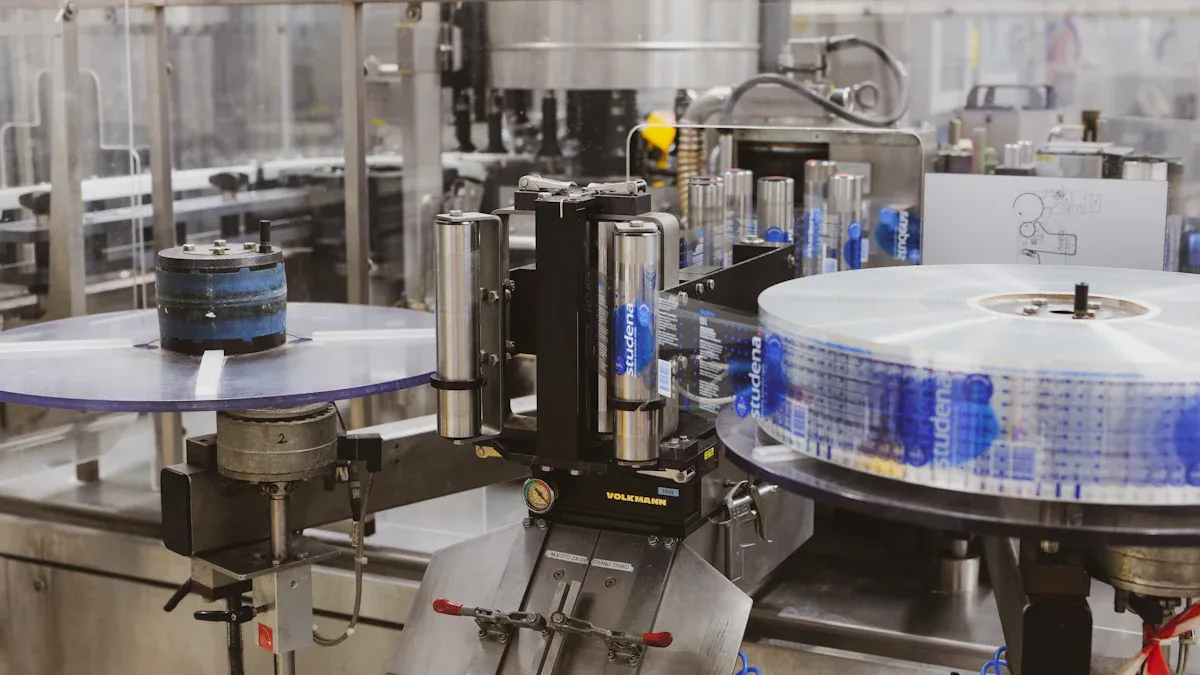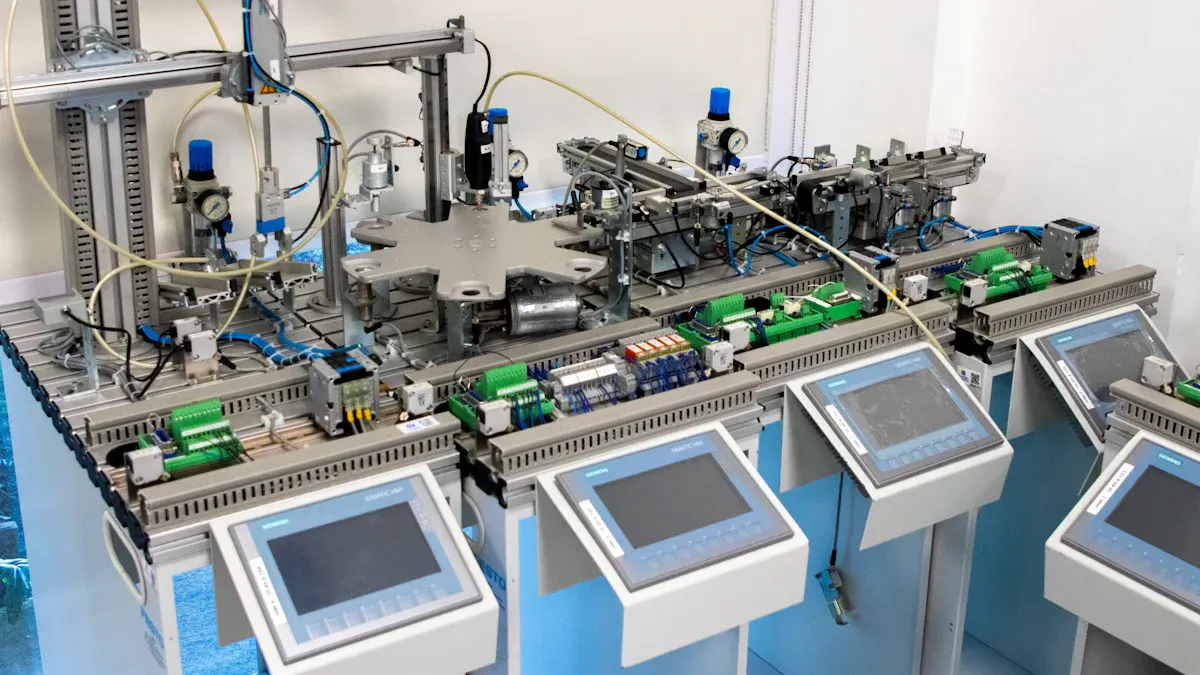
EPI Susceptors play a vital role in GaN semiconductor production by supporting wafers during epitaxial growth. Failures in these components can lead to contamination, which compromises product quality. Issues like thermal degradation or coating delamination release impurities into the production environment. You can reduce these risks by adopting proactive maintenance and monitoring practices.
Key Takeaways
- Checking and fixing EPI Susceptors often stops damage early and avoids contamination.
- Using strong, rust-proof materials for susceptors lowers the chance of bad chemical reactions.
- Replacing EPI Susceptors on time keeps production steady and reduces defects in GaN semiconductors.
Key EPI Susceptor Failure Modes

Thermal Degradation
Thermal degradation occurs when the EPI Susceptor is exposed to extreme temperatures over time. This failure mode weakens the material, causing it to lose its structural integrity. You might notice this issue in high-temperature processes, where the susceptor’s surface begins to crack or warp. These changes can lead to uneven heat distribution, which directly affects wafer quality.
Tip: To minimize thermal degradation, ensure that your process temperatures stay within the recommended range for the susceptor material.
Mechanical Wear and Damage
Mechanical wear and damage often result from repeated handling or improper loading of wafers onto the EPI Susceptor. Scratches, dents, or other physical defects can develop on the susceptor’s surface. These imperfections create hotspots or uneven surfaces, which can compromise the uniformity of the epitaxial layers.
You can reduce mechanical wear by using automated wafer-handling systems and inspecting the susceptor regularly for signs of damage.
Chemical Corrosion
Chemical corrosion happens when the EPI Susceptor reacts with the gases or chemicals used during the epitaxial growth process. Over time, this reaction can degrade the susceptor’s surface, introducing impurities into the production environment. Corrosion is especially common in processes that involve aggressive chemicals or high humidity levels.
To combat this, you should select susceptors made from corrosion-resistant materials. Additionally, maintaining a controlled process environment can help reduce the risk of chemical reactions.
Coating Delamination
Coating delamination occurs when the protective coating on the EPI Susceptor begins to peel or flake off. This failure mode exposes the underlying material to the harsh conditions of the production process. As the coating deteriorates, particles can contaminate the wafers, leading to defects in the final product.
Note: Regularly inspect the susceptor’s coating for signs of wear. Replacing the susceptor before delamination becomes severe can save you from costly contamination issues.
Contamination Risks from EPI Susceptor Failures

Particle Generation
When an EPI Susceptor fails, it often generates particles that contaminate the production environment. These particles can come from surface cracks, coating delamination, or mechanical wear. Once released, they settle on wafers, creating defects that reduce the quality of the final product. Even microscopic particles can disrupt the epitaxial growth process, leading to costly rework or scrap.
Tip: Use cleanroom protocols and regular inspections to catch particle generation early. This helps you maintain a contamination-free environment.
Impurity Introduction
Chemical corrosion or material degradation in the EPI Susceptor can introduce impurities into the process. These impurities mix with the gases or chemicals used during epitaxial growth, altering the composition of the layers. As a result, the electrical properties of the GaN semiconductor may not meet specifications. Impurities also increase the risk of device failure in the field.
To prevent this, choose susceptors made from high-purity materials. Monitoring the chemical environment during production can also help you detect and address contamination sources.
Wafer Uniformity Issues
A damaged or degraded EPI Susceptor often causes uneven heat distribution or surface irregularities. This leads to non-uniform epitaxial layers on the wafer. Poor uniformity affects device performance and reduces yield. For example, variations in layer thickness can cause electrical inconsistencies across the wafer.
Regularly inspect the susceptor for signs of wear or damage. Replacing it before it impacts wafer uniformity ensures consistent production quality.
Strategies to Prevent Contamination
Regular Maintenance and Inspection
Manutenção regular and inspection are essential to prevent contamination in your production process. By routinely checking the condition of your EPI Susceptor, you can identify early signs of wear, corrosion, or coating delamination. This proactive approach helps you address potential issues before they escalate into costly contamination problems.
Create a maintenance schedule that includes visual inspections, surface cleaning, and performance testing. Use tools like microscopes or surface scanners to detect microscopic defects that may not be visible to the naked eye.
Tip: Document each inspection and maintenance activity. Keeping detailed records helps you track trends and predict when a susceptor might need replacement.
Material and Coating Optimization
The materials and coatings used in your EPI Susceptor play a critical role in its durability and performance. Choosing high-quality, corrosion-resistant materials reduces the risk of chemical reactions that lead to contamination. Similarly, advanced coatings can protect the susceptor from thermal and mechanical damage.
Work with your supplier to select materials and coatings tailored to your specific production environment. For example, if your process involves aggressive chemicals, opt for a susceptor with a chemically inert coating.
| Material Type | Benefits |
|---|---|
| High-purity graphite | Excellent thermal stability |
| Silicon carbide coating | Resistance to chemical corrosion |
| Advanced ceramic layers | Enhanced mechanical durability |
Note: Periodically evaluate the performance of your chosen materials and coatings. Upgrading to newer technologies can improve production quality and reduce contamination risks.
Process Monitoring and Control
Monitoring and controlling your production process ensures that your EPI Susceptor operates within safe parameters. Temperature fluctuations, gas flow inconsistencies, or improper handling can accelerate susceptor degradation and increase contamination risks.
Install sensors to track key variables like temperature, pressure, and gas composition in real time. Use this data to adjust your process settings and maintain optimal conditions. Automated monitoring systems can alert you to deviations, allowing you to take corrective action immediately.
Callout: Consistent process control not only extends the life of your susceptor but also improves wafer quality and yield.
Timely Susceptor Replacement
Even with the best maintenance practices, every EPI Susceptor has a finite lifespan. Delaying replacement increases the risk of contamination from particle generation, impurity introduction, or wafer uniformity issues. Replacing the susceptor at the right time ensures uninterrupted production quality.
Establish a replacement schedule based on the susceptor’s material, coating, and usage conditions. For example, susceptors exposed to high temperatures or aggressive chemicals may require more frequent replacement.
Reminder: Don’t wait for visible signs of failure. Proactively replacing the susceptor minimizes downtime and prevents costly defects in your final product.
EPI Susceptor failures, such as thermal degradation, mechanical wear, and coating delamination, pose significant contamination risks. These include particle generation, impurity introduction, and wafer uniformity issues.
Reminder: Regular maintenance, material optimization, and timely replacement are essential to prevent contamination.
Adopting proactive strategies ensures consistent production quality and enhances the reliability of your GaN semiconductors.
FAQ
What is the lifespan of an EPI Susceptor?
The lifespan depends on material, coating, and usage. Typically, it lasts several months to years with proper maintenance and controlled production conditions.
How can you detect early signs of susceptor failure?
Inspect for surface cracks, coating wear, or uneven heat distribution. Use tools like microscopes or sensors for precise detection.
Can automation reduce contamination risks?
Yes, automated systems improve wafer handling and process monitoring. They minimize human error and ensure consistent production conditions.


